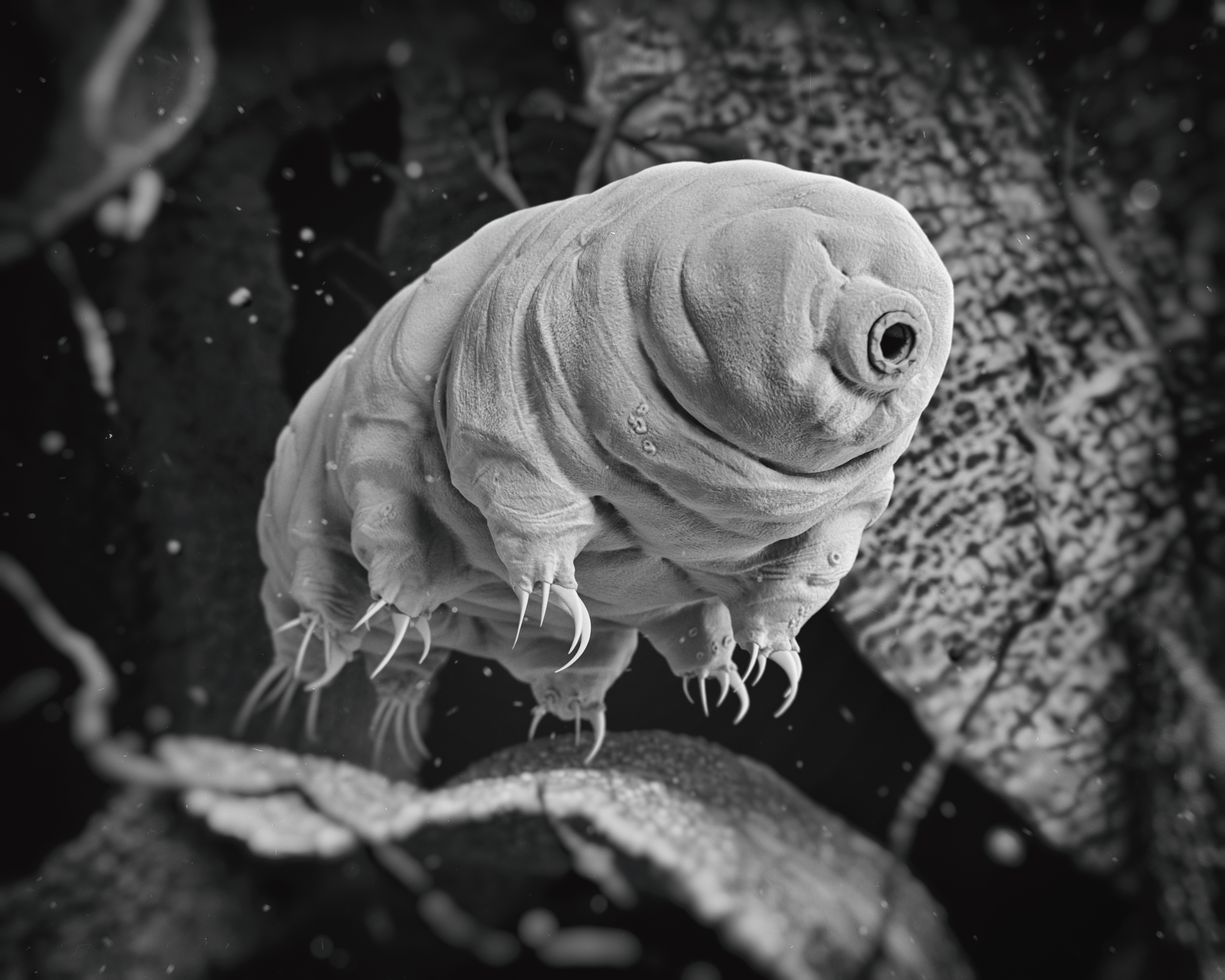Life has been around on Earth for at least 3.7 billion years, during which time it has evolved into “endless forms most beautiful and most wonderful”, in the words of Charles Darwin. Someday, however, it’s possible that planet Earth will be reduced to just one animal. It isn’t cockroaches, nor scorpions, and it certainly isn’t Homo sapiens – the last animal standing is likely to be the humble tardigrade.
Look around the universe and you’ll get the impression that it’s very difficult for life to emerge. Once established though, life is surprisingly hard to get rid of.
We know of five major mass extinction events in Earth’s history that have wiped out at least 75 percent of species, but life has always managed to bounce back. The most severe episode struck around 250 million years ago – the Permian extinction event – and eradicated an estimated 90 percent of all species following a series of cataclysmic volcanic eruptions. After a few million years of recovery, life returned in abundance and reached a healthier equilibrium.
Some argue we’re currently in the midst of a sixth mass extinction, primarily due to human meddling, like habitat destruction, pollution, and climate change. While this is undoubtedly a pressing issue that urgently needs addressing, it’s extremely unlikely to spell the death of all life on Earth.
A more serious existential threat is nuclear weapons. Following the event of an atomic war, radioactive fallout would spread across much of the globe. Simultaneously, soot from the bombs will blow into Earth’s atmosphere and spark a “nuclear winter”, bringing prolonged periods of darkness and freezing temperatures. This would cause the foundation of ecosystems to collapse by halting photosynthesis, leading to the starvation of many animals.
However, research suggests that life in parts of the planet could survive an all-out nuclear war for a while at least – even though humans may not. This might include a gaggle of hardy invertebrates, such as cockroaches and scorpions, which can endure surprising doses of radiation, as well as many forms of microscopic life.
On a more astronomical scale, there is the ferocious threat of astrophysical events, such as gamma-ray bursts, large asteroid impacts, and a supernova explosion. Extreme astrophysical events like this have the potential to effectively sterilize the globe of all life. A supernova, the explosive death throes of an aged star, would shower Earth with intense amounts of cosmic radiation, damaging the ozone layer that protects us from harmful ultraviolet light in the Sun’s rays.
Fortunately, the chances of these forces striking within the lifetime of our Solar System is low. If a star goes supernova 40 to 50 light-years away, we should be safe. However, there are uncertainties around this and many forms of life on Earth could potentially be annihilated by a supernova under a worst-case scenario.

Tardigrades are sometimes called water bears. Can you see why?
Image credit: Oleh Liubimtsev/Shutterstock.com
One species might be okay, though. In 2017, scientists at the University of Oxford and Harvard University studied the resilience of life to astrophysical events, concluding that the only animal likely to survive the risk of extinction from all astrophysical catastrophes is the tardigrade.
“To our surprise we found that although nearby supernovae or large asteroid impacts would be catastrophic for people, tardigrades could be unaffected. Therefore it seems that life, once it gets going, is hard to wipe out entirely. Huge numbers of species, or even entire genera may become extinct, but life as a whole will go on,” Dr David Sloan, co-author of the 2017 study and then a post-doctoral Research Associate in the Department of Physics at Oxford University, said in a statement.
Tardigrades are an eight-legged, near-microscopic animal that’s notorious for being extremely hard to kill. On the taxonomic tree, they are part of the animal kingdom; they are not bacteria, amoebas, archaea, or fungi.
To endure intense environments, the tiny creatures will enter a state of deep hibernation called cryptobiosis, expelling more than 95 percent of the water from their bodies and curling into a dehydrated nugget. They can survive low temperatures of -272.95°C (-460°F) and high temperatures of 150°C (302°F), as well as extreme pressure and strong radiation. They can even live in the vacuum of space with little bother. As such, it’s likely they could be able to weather the storm of a supernova.
Ultimately, life on Earth does have a hard expiration date: the death of the Sun. The Sun will begin to die in about 5 billion years when it runs out of hydrogen. As it edges towards its next phase as a red giant star the Sun will expand, becoming so large that it will consume its two closest planets, Mercury and Venus. Eventually, the Earth is likely to be engulfed too.
During this deathly journey, Earth will heat up and become doused in intense radiation. The oceans will literally evaporate and the atmosphere will be stripped away, leaving behind a barren, scorched landscape. Even tardigrades won’t survive this scenario. Perhaps some extremophile bacteria used to intense heat would cling on for a while, but this will be game over for life – at least as we know it.
Source Link: What Will Be The Last Living Thing On Earth?